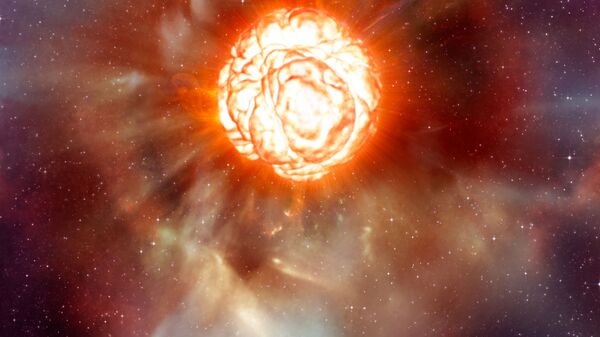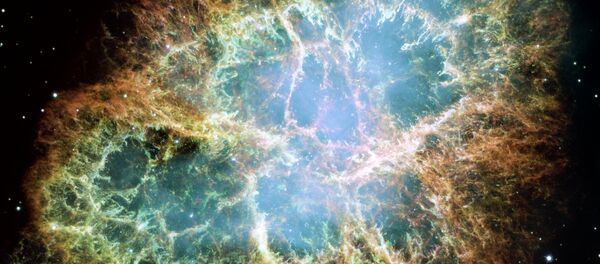Astronomers have recently been puzzled by the unusual dimming activity of the semiregular star Betelgeuse – a red supergiant located in the constellation of Orion, which is believed to be 1,400 times larger than the Sun.
Observers from all over the world have rushed to Twitter to share their suggestions of what could have potentially been going on and came to the extraordinary conclusion that Betelgeuse’s unusual activity might be a sign of an upcoming explosion and spectacular supernova event.
#Betelgeuse has dropped to magnitude ~1.5 within recent weeks, the most significant drop of this variable star in decades. Observers report it to be noticable dimmer than usual. See for yourself: it's the red left shoulder star of #Orion, due east after dusk! pic.twitter.com/7MSrzppt52
— Jan Hattenbach (@JanHattenbach) December 22, 2019
Head of Physics at Uppingham School Dr David Boyce said on his Twitter account that the sudden decrease in the star’s brightness was noticeable even to a general observer’s eye and suggested that if it is about to go supernova, then the explosion would give out “more energy” in just a few hours than throughout the millions of years of its existence.
Is #betelgeuse about to go supernova? It has suddenly and rapidly decreased in brightness by a factor of 2 - noticeable to the naked eye. pic.twitter.com/VppN3X7tBL
— Dr David Boyce (@DrDavidBoyce) December 20, 2019
If it does go supernova it may 1) give off more light than the entire Milky Way galaxy 2) Give out more energy in a few hours than during all of the star's multimillion year lifetime 3) Become the brightest object in the sky 🤷♂️
— Dr David Boyce (@DrDavidBoyce) December 20, 2019
“Whatever happens it will be worth watching. A supernova within our galaxy is a once in a lifetime spectacle. One as close as #betelgeuse would be one to wake the kiddies up for”, Dr Boyce concluded.
Netizens have been left ecstatic to hear news that they will possibly become witnesses to a rare astronomic event, with Betelgeuse turning into a type II supernova. However, many noticed that while the star is believed to be located more than 600 light years away from the Earth, the event may already have happened in the 1300s.
I love Orion and Betelgeuse. One of my favourite (and easiest) constellations to locate in the night sky. It would be an incredible thing to witness if it goes supernova.
— Ja9 C (@bubbafly1) December 21, 2019
It is an interesting development. A supernova event might already have happened. We just haven't seen it yet! (Google comes up with all sorts of distances. Possibly 600 light years)
— Dawn (@DawnSunrise1) December 21, 2019
This year can we just all toast to Betelgeuse going supernova so we can start the 2020s out with a *sight* in the night sky heralding a change here on Earth
— Bobak Ferdowsi (@tweetsoutloud) December 22, 2019
Friends, if we're lucky enough to see Betelgeuse go supernova anytime soon, it will have gone supernova over 600 years ago. While the speed of light being finite is limiting, it's truly beautiful because it gives us the *one sure way* to time travel into the past: by looking UP.
— Sophia Gad-Nasr 🕎🏳️🌈 (@Astropartigirl) December 22, 2019


